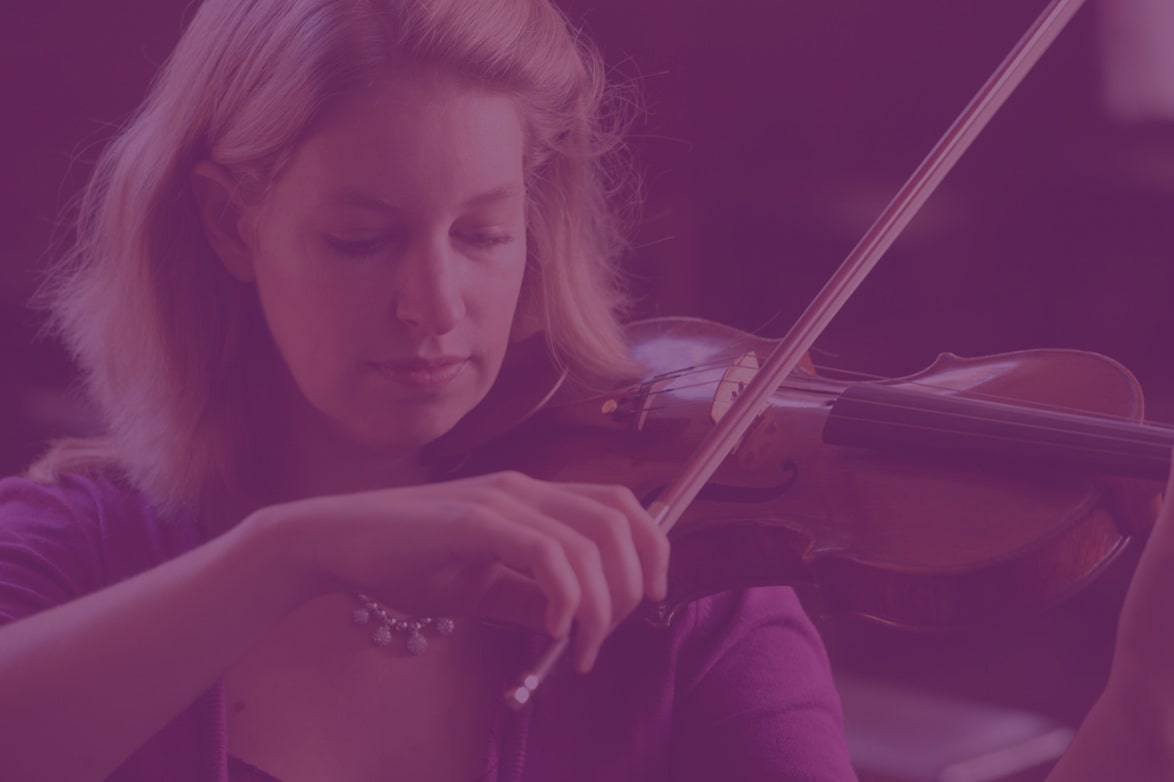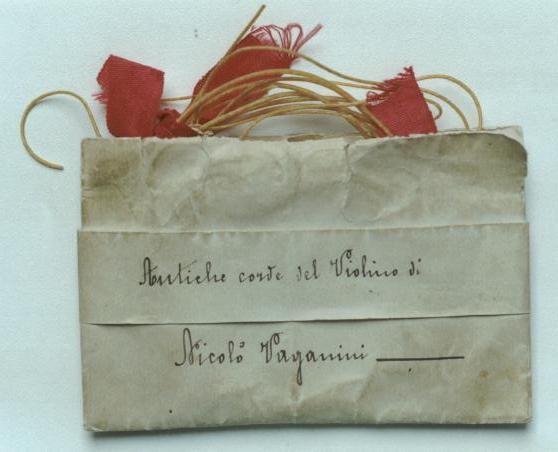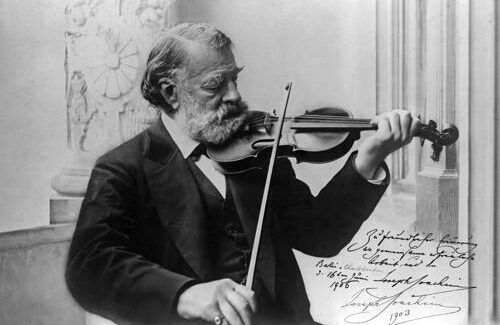
Publications
VIBRATO – a short overview in historical perspective
Vibrato (from the Latin word ‘vibrare’, to shake, a slight change in pitch used by performers to influence the sound) has already been mentioned in very old sources, going back as far as 1545 (Martin Agricola) and probably even further. It can be assumed that vibrato did excist in almost the whole musical history and in many different cultures.
However, the use and application of the several kinds of vibrato, especially inwestern classical music, did greatly vary between different style periods, centuries, and places. The use of vibrato has been influenced by the fashion of the time, traditions in musical schools, teachers, and orchestras and by the taste of the performers. These ‘fashions’ can be seen as waves: they come and disappear. For example Mersenne (1636) describes lute vibrato, calling it verre cassé. He writes that vibrato is little used in his time, but that its lack of popularity can be explained a reaction against its overuse in former times.
Since the years ’60 of the last century classical musicans developed a growing consciousness about performance styles of different time periods, inspired by the early music movement. Suddenly, performers seemed to wake up to the fact that their ‘modern’ fashion of performing was perhaps not suitable anymore to music from the baroque and classical time and they went searching how this music could have been intented.
Nowadays, most modern symphony orchestras adopted this consciousness and their musicians will not win auditions anymore if they don’t show an awareness of the period in which the repertoire was composed and integrate that in playing with the appropriate performance style. Performing a Mozart concerto in the style of Chaikovsky, for example, is not longer tolerated, except for some really old-‐fashioned orchestras that soon will change their minds.
This article intends to give a short overview of the different ways vibrato could have been used in several style periods and countries from the Baroque untill now. Hopefully this will help to develop a general impression about what kind of vibrato (to your own taste!) could be used in the repertoire that one studies and what kind of vibrato could be historically spoken appropriate. The musician than can base his artistic choice in an informed way. This overview will be by no means complete, as there are many thick books writen about this subject. We will mainly focus on quotes by important musicians and music teachers in the several time periods, preserved in their treatises on performing and teaching music. Everyone is free to interpretate their words as one perceives it, but it already can be helpful to read these different quotes and think about what they could have meant.
In modern string playing, vibrato is produced by rocking the left hand, usually from the wrist, as a note is played; in modern wind playing, it is effected by regulating the airflow into the instrument or by varying the tension of the lips or the pressure of the mouth on the reed or mouthpiece. Since the beginning of the 20th century, vibrato, particularly on bowed stringed instruments, has become essentially an organic feature of tone production, a means of adding continuous intensity to the sound; vibrato had become a standard feature of the unchanging legato sound, still taught at present. Click here to see an example of that way of teaching: https://www.youtube.com/watch?v=xThOpGIgt7w
However, how much more varied and consciously vibrato was applied before the two world wars! For one, there were different ways to make vibrato. String players not only used the left hand, but there also excisted ‘bogenvibrato’, vibrato produced by the bow, or they used 2 vingers of the left hand (in stead of one). Also, vibrato (or ‘tremolo’ as it was generally termed) was considered to be an ornament, an expressive device that, like many others available to the performer, was used sparingly.
Ganassi (1543) writes about vibrato on the viola da gamba and mentiones that he finds it appropriate for “sad and aggrieved” music. Other gamba players who write about vibrato are Simpson (1659), who also recommends bow tremolo, De Machy (1685), Marais (1686), Danoville (1687) and Jean Rousseau (1687). They all mention the two-‐ finger vibrato – a kind of microtonal trill – and the more familiar one-‐finger variety. In this recording of Marais pieces both types of vibrato can be clearly distinguished: https://www.youtube.com/watch?v=XXnwKlDvvAk. Simpson is calling the two-‐finger vibrato close shake, De Machy calls it tremblement sans appuyer, Danoville and Rousseau use the term battement and Marais calls it flattement. The one-‐finger vibrato is also mentioned, termed langeur by Rousseau and plainte by Marais, but they mainly recommend this for the notes played with the fourth finger, when the two-‐finger vibrato was impossible.
Marin Marais (1656 – 1728)
Wind players from that time describe a similar kind of vibrato, like the two-‐finger vibrato on the gamba. The flutists Hotteterre (1707) and Corrette (1735) both mention flattementthat, like the two-‐finger vibrato, requires the sounded note to be alternated with one a microtone higher, produced by partially closing the flute’s next hole with an adjacent finger. In this recording of Hotteterre trio sonatas this can type of vibrato can be heard: https://www.youtube.com/watch?v=zOMF6yg09Qs. Quantz (1752) also mentions vibrato, he calls it bebung, only to say that this is appropriate when swelling and diminishing a long-‐note messa di voce.
Jacques – Martin Hotteterre (1674 – 1763)
For violinists, the bow vibrato (an andulating movement of the bow) is described in many early sources. This type of vibrato was prefered by for example Ganassi (1535), Brossard (1703), Walther (1732) and Matheson (1739). Left-‐hand, one-‐finger vibrato is described by Martin Agricola as “sweeting” the sound of “Polish violins”. Eighteenth – century treatises by Tartini (1771) and Leopold Mozart (1756) (who repeats much of Tartini’s material) recommend specific and limited use of violin vibrato. Here you can hear a nice example of limited use of vibrato, in Tartini sonatas:https://www.youtube.com/watch?v=HHAbL_JSWmM. Only Geminiani, who calls vibrato close shake, writes “it should be made use of as often as possible”.
However, Leopold Mozart speaks disapprovingly of violinists who “tremble upon every note as if they had the palsy”. He describes vibrato as follows: “The tremolo is an ornamentation which arises from Nature herself and which can be used charmingly on a long note, not only by good instrumentalists but also by clever singers. Nature herself is the instructress thereof. For if we strike a slack string or a bell sharply, we hear after the stroke certain wave-‐like undulation (ondeggiamento) of the struck note. And this trembling after-‐sound is called tremolo, or tremoleto.” Leopold Mozart writes that there also are vibrato varieties that are increasing in speed or that are already fast from the beginning. They can be distinguished by the following signs: slow UUUUUU, increasing UUuuuu, rapid uuuuuuuuu. The larger strokes represent quavers, the smaller semiquavers and as many strokes as there be, so often must the hand be moved.
By the way, subsequent editions of Geminiani’s treatise delete the advice to ‘use it as often as possible’!
Here is an example of vibrato use in singers and orchestra that Leopold Mozart perhaps would have approved: https://www.youtube.com/watch?v=A0NOX_ZaBtw
Leopold Mozart (1719 – 1787)
Spohr (1832) and other 19th-‐century violinists continue to recommend limited, deliberate use of vibrato. Spohr writes: “Amongst the embellishments may also be classed the tremolo, and the changing of the fingers on one tone and on the same string. The singer’s voice in passionate passages, or when he forces it to its most powerful pitch, has a trembling, which resembles the vibrations of a strong struck bell. This, the Violinist can imitate very closely, as well as many other peculiarities of the human voice. It consists in the wavering of a stopped tone, which alternately extends a little below or above the perfect intonation, and is produced by a trembling motion of the left hand in the direction from the nut towards the bridge. This motion however be slight, and the deviation from the perfect intonation of the tone should hardly be perceptible to the ear. In old compositions the tremolo is indicated by points or by the word tremolo; in
new compositions it is generally left to the performer. Avoid however its frequent use, or in improper places. In places where the tremolo is used by the singer, it may also advantageously be applied to the Violin. This tremolo is therefore properly used in passsionate passages, and in strongly marking all the fz or > tones. Long sustained notes can be animated and strenghtened by it: if such a tone swells from p to f, a beautiful effect is produced by beginning the tremolo slowly, and in proportion to the increasing power, to give a gradually accelerated vibration.“
In his ‘Violinschule’ Spohr added a violin concerto by Rode which he completely marked with wave-‐like signs (slow big waves going to faster smaller waves and opposite) above the notes, to indicate where he would recommend which kind of vibrato. This is very interesting to see, as this is very different from the choices we would make nowadays. For example the first long notes of the violin solo are completely without vibrato where as only one note (the highest) from the whole phrase gets some vibrato.
Louis Spohr (1784 – 1859)
Also in the autograph of Mendelssohn’s violin concerto, the composer added special signs at the moments where vobrato should be used. In general, vibrato is said to be useful on long notes and to highlight expressive moments; the modern use of vibrato to add general intensity to the sound is never used.
How much difference the choices in use of vibrato in early romantic repertoire makes is clearly demonstrated by the following recordings of Mendelssohn’s Schottish symphony: Harnoncourt: https://www.youtube.com/watch?v=aeoxTvgEK0U
Klemperer: https://www.youtube.com/watch?v=4nP0gqKmWuY
Vocal vibrato throughout the different time periods is difficult to define. Rameau (1760) writes very negatively about tremolo by singers, which he describes as chevrotements (the bloating of a goat). Borghese (1786) writes that a forced voice always trembles.
W.A. Mozart also didn’t like singers who used too much vibrato (‘mit fleiss’ he called this), which becomes clear from this note by him: “Meissner hat wie sie wissen, die üble gewohnheit, dass er oft mit fleiss mit der stimme zittert – ganz viertl – ja oft gar achtl in aushaltender Note marquirt – und das habe ich an ihm nie leiden können. Das ist auch wirklich abscheulich. Das ist völlig ganz wieder die Natur zu singen!.
Coma y Puig (1766) and Tomeoni (1799) also judge negatively about singers with a vibrato that comes automatically on every bar, without consideration. Some sources, however, defend the idea that there excists a ‘natural vibrato’, but most of these sources are speaking about young boys (Knabenstimmen), not about well-‐trained professional singers. Praetorius (1619) for example states “vibrato belongs to every good voice”. In this movie you see an amateur singer with a teacher who also believes that her student has a ‘natural vibrato’ by himself: https://www.youtube.com/watch?v=qEHJB5yzrMw Later Tartini compares the singervibrato with the violinvibrato, but with his addition that “not all singers own a voice that includes vibrato – on the contrary. “
It’s interesting to compare the vibrato use for example in ‘non so più’ (Nozze di Figaro)
from 1928: https://www.youtube.com/watch?v=4XNGtF1KP6I
from 1962: https://www.youtube.com/watch?v=WnUWnndV5Hs and
from 2008: https://www.youtube.com/watch?v=Qjrb7_vjORU
After this short overview one hopefully will be inspired to try out different types of vibrato for the time period of the piece one is preparing to perform and to read more about the context in which the above quotes were made. In some cases, it will even be needed to unlearn the painstakingly practised continuous vibrato, in order to develop the freedom to make more interesting artistic choices. Good luck!
By: Esther Visser, visser.esther@gmail.com
Sources:
-‐ David D. Boyden, The History of Violin Playing from Its Origins to 1761 (London: Oxford U Pr. 1965)
-‐ Clive Brown, Classical & Romantic performance Practise 1750 -‐ 1900 (London: Oxford U Pr. 1999)
-‐ Greta Moens-‐Haenen, Das Vibrato in Der Musik des Barock (Graz: Akademische Druck-‐u Verlagsansalt 2004)





